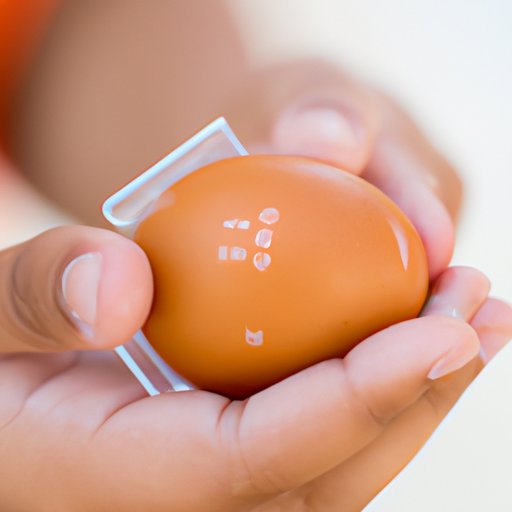
Introduction
Have you ever wondered how to test if your eggs are fresh? When cooking or baking, using fresh eggs is essential for the best flavor and texture. Knowing how to test egg freshness can help you avoid using spoiled eggs and ensure that your dishes turn out exactly how you want them to. In this article, we’ll cover five different ways to test egg freshness, as well as tips on proper storage and purchasing. Whether you’re a seasoned chef or a novice in the kitchen, mastering the skill of testing egg freshness can greatly contribute to your cooking success.
The Float Test: How to Determine the Freshness of Your Eggs
The float test is a popular method for testing egg freshness. It works because as an egg ages, the air sac inside the shell gets larger, which makes the egg less dense and more buoyant. Here’s how to do it:
- Fill a large bowl with cold water.
- Gently place the egg in the water.
- If the egg sinks to the bottom and lays flat on its side, it’s very fresh.
- If the egg sinks but stands upright on the bottom, it’s not as fresh but still good to eat.
- If the egg floats to the top, it’s no longer fresh and should be discarded.
Make sure to discard any eggs that have cracked shells, as bacteria can enter through cracks.
Egg-cellent Tips for Testing the Freshness of Eggs
In addition to the float test, there are other ways to test egg freshness:
- The Shake Test: Hold an egg up to your ear and shake it. If you hear a sloshing sound, the egg is old.
- The Candling Test: Shine a bright light behind an egg in a dark room. A fresh egg will have a small air pocket, a clear white, and a clearly defined yolk. An older egg will have a larger air pocket, a thinner white, and a less defined yolk.
Each test has its benefits and limitations depending on your situation. For example, the candling test requires a dark room and a bright light. The shake test is quick and easy but not always reliable. Consider which method works best for you.
Cracking the Code: Simple Ways to Test Eggs for Freshness
There are some clear signs that can help you identify whether an egg is fresh or not just by looking at it, smelling it, or listening to it:
- Appearance: A fresh egg will have a bright orange yolk that stands up high in a thick white. A stale egg will have a flatter yolk and a thinner white that spreads out more.
- Smell: Fresh eggs have virtually no odor. If an egg smells like sulfur or rotten, throw it away immediately.
- Sound: If you gently tap a fresh egg against a hard surface, it will make a quiet, dull sound. An old egg will make a louder, more hollow sound.
When purchasing eggs, always check the expiration date on the carton. Don’t buy any cartons with cracked eggs or ones that feel slimy to the touch. Store eggs in the refrigerator at or below 40°F and away from other foods with strong odors, as eggs absorb smells easily.
Don’t Be Fooled by Old Eggs: A Quick Guide to Testing Egg Freshness
There are some common misconceptions about egg freshness that should be debunked:
- The Egg Carton Date: The date on the egg carton doesn’t actually tell you the egg’s freshness. It only indicates the date they were packaged, not when they were laid.
- The Egg Color: The color of an egg doesn’t affect its freshness or nutritional value. The color only depends on the breed of the chicken.
- The Egg Smell: A strong odor is a clear sign of a bad egg, but a lack of odor doesn’t guarantee that it’s fresh.
Testing egg freshness is especially important when cooking or baking, as it can affect taste and texture. Using old eggs can lead to baked goods that are dense or have an off flavor. Always err on the side of caution and discard any questionable eggs.
Mastering the Skill of Testing Freshness in Eggs for Perfect Baking and Cooking
Using fresh eggs in your cooking and baking can make all the difference in the end result. Here are some tips for cooking with fresh eggs:
- Peeling Hard-Boiled Eggs: Fresh eggs can be more difficult to peel, but adding a little vinegar to the boiling water can help.
- Egg Whites: Fresh egg whites will whip up better and be fluffier than older ones.
- Baked Goods: Using stale eggs can result in baked goods that are dry or have an off taste. Always use the freshest eggs possible.
Using fresh eggs can elevate any dish you make. Consider trying out some recipes that showcase fresh eggs, such as quiches or frittatas.
Conclusion
Knowing how to test egg freshness is an important skill for any cook or baker to master. By using the float test, the shake test, or the candling test, you can determine whether an egg is fresh or spoiled. Other signs to look for include appearance, smell, and sound. Proper storage and purchasing habits can also help maintain freshness.




